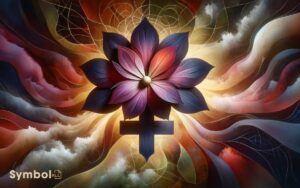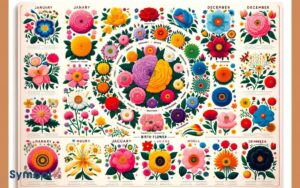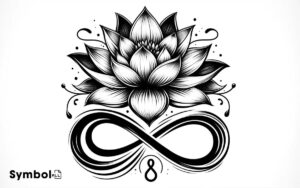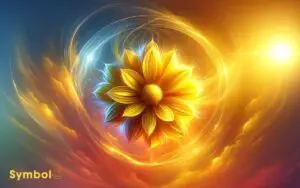Which Flower Is a Symbol of Veterans Day? Poppy!
The poppy is the symbol of Veterans Day, representing remembrance and the sacrifices of service members.
This red flower symbolizes the blood shed in service, standing for courage, loss, and the hope for peace. It originated from the fields of World War I, where it grew over the graves of fallen soldiers.
Inspired by the poem “In Flanders Fields” by Lieutenant Colonel John McCrae, the poppy has become a beacon of gratitude and remembrance.
Wearing a poppy on Veterans Day honors those who’ve served and sacrificed. There’s more to uncover about how deeply this symbol is woven into the fabric of remembrance.
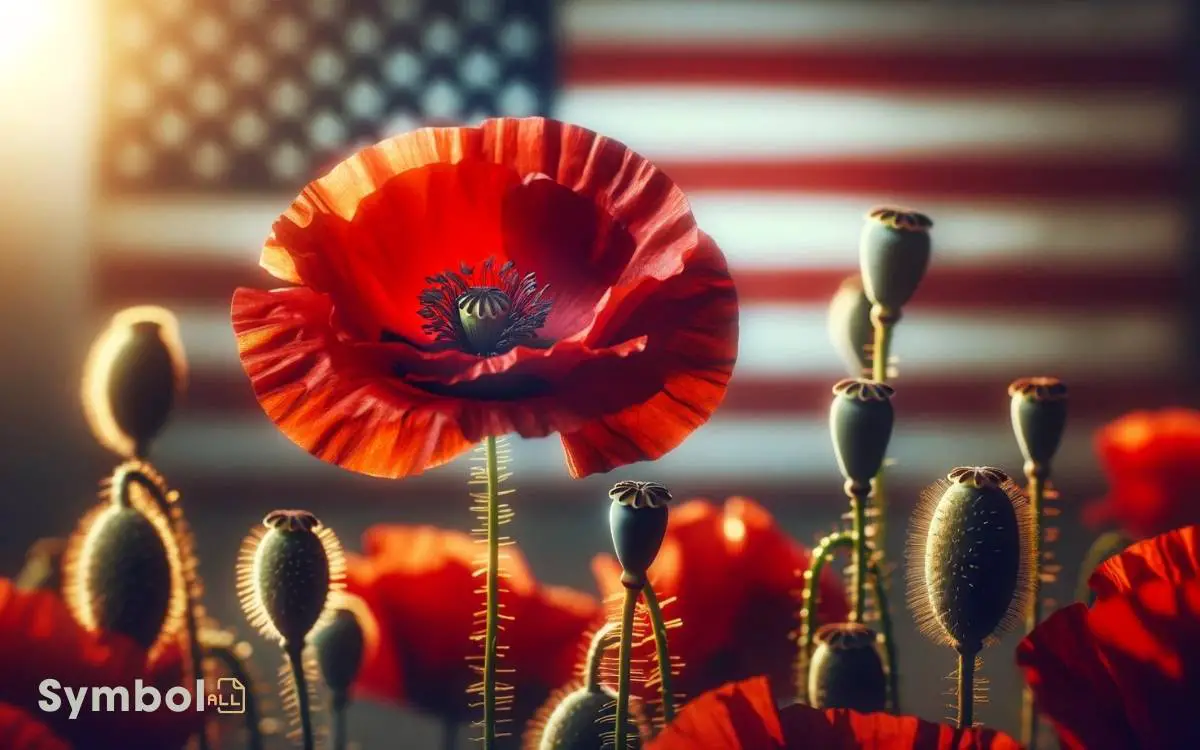
Key Takeaways
The Emblematic Poppy
The emblematic poppy, a poignant symbol of remembrance, holds a deep-seated significance for Veterans Day, honoring those who’ve bravely served. This tradition, deeply rooted in reverence and respect, extends beyond mere adornment.
When you wear a poppy, you’re partaking in a collective act of remembrance, acknowledging the sacrifices made for freedom.
This small but powerful symbol serves as a visual reminder of the courage and resilience of veterans. It’s not just a flower; it’s a beacon of gratitude, signaling deep appreciation for the peace and liberties often taken for granted.
Historical Significance
You’re stepping into the heart of Veterans Day’s legacy as you explore the origin of its poignant floral symbol and the day’s evolution.
This journey illuminates how a simple flower became a profound emblem of remembrance and respect for those who’ve served.
Understanding these aspects offers a deeper appreciation of the holiday and its significance in honoring veterans’ sacrifices.
Origin of Symbolism
Understanding the origin of the poppy as a symbol for Veterans Day involves delving into its poignant historical significance, rooted deeply in the aftermath of World War I.
This emblem of remembrance sprang from the devastated battlefields across Western Europe, where the red poppy was among the few plants to bloom.
The desolation brought by the war contrasted sharply with the vibrant red of the poppies, turning them into a powerful symbol of life, death, and renewal.
Inspired by the poem ‘In Flanders Fields’ by Lieutenant Colonel John McCrae, which vividly depicted the poppies growing among soldiers’ graves, the flower soon became synonymous with the sacrifice of veterans and a reminder of the resilience and beauty that can emerge from sorrow and loss.
Veterans Day Evolution
Over time, Veterans Day has evolved from a day commemorating the end of World War I to a broader celebration honoring all U.S. military veterans for their service and sacrifice.
Initially marked as Armistice Day to remember the armistice signed on November 11, 1918, its purpose expanded post-World War II and the Korean War.
This shift recognized the contributions and sacrifices of veterans from all branches of the U.S. Armed Forces in various conflicts around the globe.
It’s a day where the nation pauses to acknowledge the courage, dedication, and sacrifices of its military personnel. By doing so, Veterans Day serves as a poignant reminder of the cost of freedom and the unwavering spirit of those who’ve served.
World War I Origins
The origins of World War I, a conflict that reshaped the geopolitical landscape, trace back to a complex web of nationalistic fervor, militarism, imperial ambitions, and political alliances that ignited across Europe in the early 20th century.
You’d find that the assassination of Archduke Franz Ferdinand of Austria in June 1914 acted as a catalyst, sparking a chain reaction.
This event, set against a backdrop of escalating tensions, led to declarations of war that quickly enlisted the major powers into a conflict far more profoundly than anticipated.
Nations, driven by a sense of duty and the belief in their causes, mobilized millions into service, not fully grasping the scale and tragedy that World War I’d unfold.
This war profoundly altered borders, societies, and the very fabric of global relations.
“In Flanders Fields” Poem
Reflecting on the profound impact of World War I, it’s impossible to overlook ‘In Flanders Fields,’ a poem that captures the essence of the war’s legacy and its enduring remembrance.
Penned by Lieutenant Colonel John McCrae, a Canadian physician, this poignant work emerged from the devastation he witnessed firsthand on the battlefields of Ypres, Belgium.
Through its verses, you’re transported to the scarred landscapes marked by rows of crosses, underlining the immense sacrifices of soldiers.
The poem’s vivid imagery of poppies blooming among the graves serves as a powerful symbol of resilience and hope amidst loss. Its heartfelt call to honor the fallen resonates deeply, urging you to hold the torch high in memory of those who gave their all.
Adoption and Recognition
As ‘In Flanders Fields‘ resonated with millions, its imagery of poppies inspired the adoption of the flower as a symbol of remembrance for soldiers lost in war.
This transformation wasn’t instantaneous but grew as communities worldwide sought tangible ways to honor those who’d sacrificed their lives.
The poppy’s vivid red color, which mirrors the blood spilled in conflict, became a powerful visual statement of the cost of war and the value of peace.
Nations embraced this symbol, integrating it into ceremonies and memorials, ensuring the message of remembrance transcended borders.
You’ll find the poppy worn on lapels every Veterans Day, a silent yet eloquent tribute to the fallen, recognized universally for its profound significance in commemorating bravery and sacrifice.
Symbolism and Meaning
You’ve learned about the adoption and recognition of the Remembrance Poppy, and now it’s time to explore its deep symbolism and historical roots.
The significance of this flower goes beyond mere decoration; it’s a profound emblem of honor, memory, and hope for veterans and their families.
Understanding its origins and meanings will enrich your appreciation for this enduring symbol of Veterans Day.
Remembrance Poppy Significance
The Remembrance Poppy serves as a powerful symbol of respect and memory for those who’ve lost their lives in military service, embodying the sacrifices made and the hope for peace.
Wearing this poignant emblem, you’re not just honoring the fallen; you’re acknowledging the weight of conflict and the preciousness of peace.
It transcends mere remembrance, weaving a shared narrative of resilience, unity, and the enduring spirit of those who served. By donning the poppy, you’re participating in a global gesture of solidarity, recognizing the cost of freedom and the importance of cherishing it.
This simple yet profound act connects generations, cultures, and communities, reminding us all of the price paid for the liberties we enjoy today.
Historical Roots Explained
Delving into the historical roots of the Remembrance Poppy, we uncover a poignant narrative that intertwines the ravages of war with the resilient bloom of hope and memory.
This emblem traces back to the battlefields of World War I, where amidst devastation, poppies flourished on the desolate landscapes of Western Europe. Their vivid red blossoms became a symbol not just of the blood shed but also of renewal and the cycle of life.
Inspired by the poem ‘In Flanders Fields‘ by Lieutenant Colonel John McCrae, the poppy evolved into a powerful symbol. It reminds us of the sacrifices made and the fragile peace secured.
Wearing a poppy today signifies your respect and remembrance for those who’ve served and sacrificed, bridging past conflicts with present gratitude.
International Perspectives
Around the world, various countries honor their military veterans with unique symbols, reflecting a rich tapestry of cultural respect and remembrance.
In the United Kingdom, the red poppy is a profound emblem of remembrance and support for the armed forces, a tradition stemming from the poppies that grew over the battlefields of World War I.
Similarly, in Australia and Canada, the red poppy symbolizes the memory of those who died in military service. France also shares this symbol, connecting deeply with its own World War I history.
Conversely, in the United States, the poppy joins the bouquet of symbols during Veterans Day, linking American remembrance practices with those of its allies.
Each flower or symbol carries the weight of gratitude, serving as a bridge across nations, honoring those who’ve served.
Veterans Day Traditions
You’ve probably noticed the poppies worn or displayed during Veterans Day, a profound symbol of remembrance and honor for those who’ve served. These flowers aren’t just chosen for their beauty; they carry deep historical significance linked to the sacrifices made by veterans.
Moreover, ceremony floral arrangements play an essential role in commemorating this day, each element thoughtfully selected to convey respect and gratitude.
Poppy Symbolism Explained
Wearing a poppy on Veterans Day serves as a poignant symbol of remembrance and honor for those who have served and sacrificed in military conflicts. This tradition, deeply rooted in history, carries a powerful message of gratitude and reflection.
The red poppy’s significance is not merely ornamental but is steeped in meaning, symbolizing the blood shed in battle and the resilience of the human spirit.
| Aspect | Significance |
|---|---|
| Color | Represents blood spilled in conflict |
| Resilience | Symbolizes survival and regrowth amidst devastation |
| Historical Roots | Originated post-WWI as a remembrance symbol |
| Global Recognition | Acknowledged worldwide as a symbol of sacrifice |
| Personal Tribute | Offers individuals a way to honor and remember |
Understanding the symbolism of the poppy enriches your participation in Veterans Day, connecting you with a legacy of remembrance and respect.
Ceremony Floral Arrangements
Incorporating specific floral arrangements into Veterans Day ceremonies is a tradition that deeply honors the memory and sacrifice of military personnel. You’ll find that red poppies are prominently featured, symbolizing the blood shed in service.
These flowers aren’t only worn but also used in wreaths and bouquets laid at memorials and gravesites as a sign of respect and remembrance.
Additionally, white flowers, often lilies or roses, represent purity and peace, offering a message of hope and renewal amidst the solemnity of the day.
By choosing these flowers, you’re participating in a powerful act of remembrance, connecting with a tradition that transcends generations.
It’s a meaningful way to pay tribute to those who’ve served, ensuring their sacrifices are never forgotten.
Ways to Wear the Poppy
Traditionally, many individuals opt to wear the poppy on their left side, near the heart, to pay tribute to the sacrifices of veterans. This positioning is symbolic, indicating the poppy’s proximity to your heart, acknowledging the profound respect and remembrance for those who’ve served.
When attaching the poppy, make sure it’s firmly placed on your left lapel or above your heart on clothing that lacks lapels. For individuals in uniform, regulations may specify a specific placement, often corresponding with medals or badges.
It’s also considerate to verify that the poppy is visible, not hidden by other items such as scarves or badges.
This visible act of wearing a poppy serves as a powerful reminder of the courage and sacrifices of veterans, fostering a shared memory and appreciation.
Honoring Veterans Today
Honoring veterans today goes beyond the symbolic gesture of a poppy; it involves actively participating in acts of remembrance and support for those who’ve served.
As you seek ways to show your appreciation, consider these thoughtful actions:
- Volunteer at local veterans’ organizations: Lending your time to support the needs of veterans in your community makes a tangible difference.
- Attend commemorative events: Showing up at Veterans Day parades and ceremonies demonstrates your respect and gratitude.
- Educate others: Share stories and information about the sacrifices veterans have made. This helps keep their memories alive and spreads awareness.
Conclusion
As you don the vibrant red poppy this Veterans Day, you’re not just wearing a flower. You’re embracing a century-old symbol of sacrifice and remembrance.
Imagine each petal representing the blood shed by heroes in fields far away. This small but profound emblem serves as a bridge connecting past and present, ensuring the bravery and service of veterans are forever honored.
Let’s wear it proudly, keeping the spirit of courage and resilience alive in our hearts.

